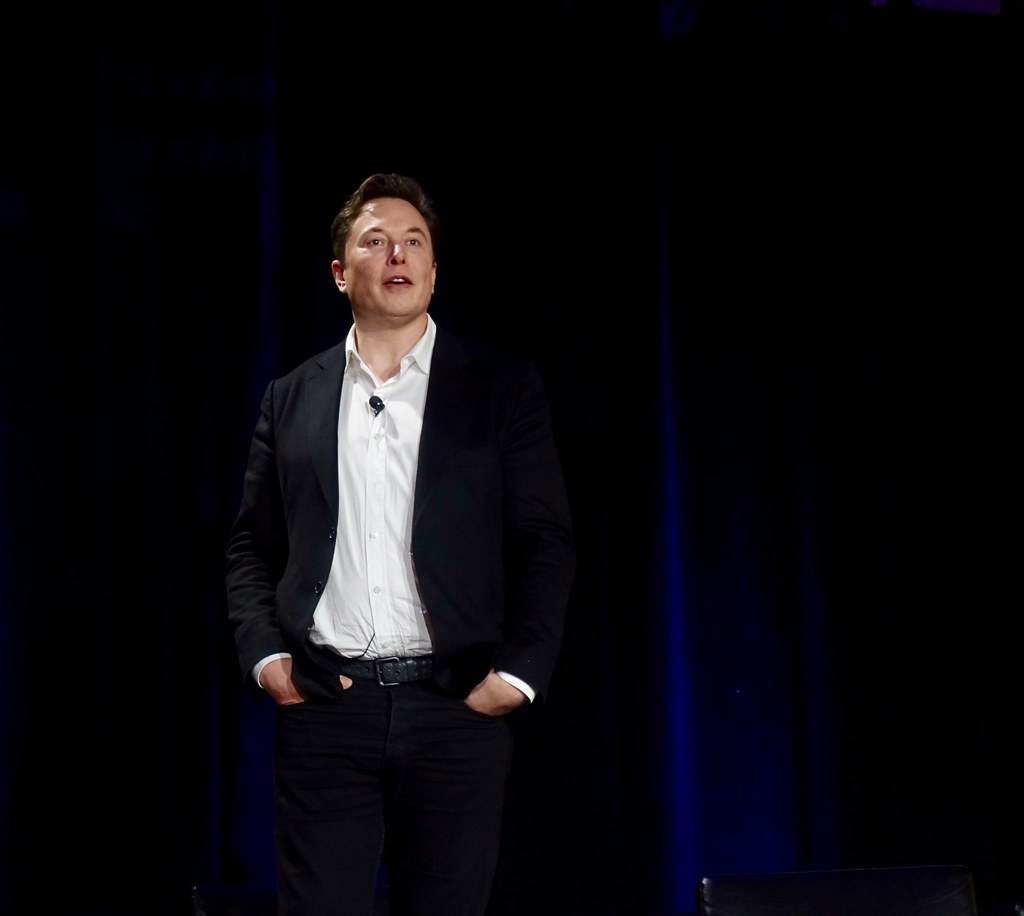He has already fathered many children. Now Musk wants all of the US to embrace extreme breeding
By Arwa Mahdawi,
The Guardian
| 11. 19. 2024
Photo "Elon Musk Presenting Tesla's Fully Autonomous Future" by Steve Jurvetson on Flickr (CC BY-NC-SA 2.0)
Is Elon Musk the dinner party guest from hell? It sure seems that way. Not only is the man desperate for people to laugh at his crass jokes, he reportedly has a weird habit of trying to donate his sperm at every opportunity – including, according to an October New York Times report, an incident where he offered some spermatozoa, as casually as you might pass the salt, to a married couple “he had met socially only a handful of times” during a Silicon Valley dinner party.
Musk has denied offering sperm to strangers over supper. But it would be in keeping with his creepy breeding fetish: Musk is desperate for people in developed countries to have more children and has himself fathered at least 12 children with three women. (One of the children has since sadly died.) He’s become one of the most famous faces of a growing pro-natalist movement – one with an unsettling overlap with eugenics and deeply misogynistic...
Related Articles
By Grace Won, KQED [with CGS' Katie Hasson] | 12.02.2025
In the U.S., it’s illegal to edit genes in human embryos with the intention of creating a genetically engineered baby. But according to the Wall Street Journal, Bay Area startups are focused on just that. It wouldn’t be the first...
Several recent Biopolitical Times posts (1, 2, 3, 4) have called attention to the alarmingly rapid commercialization of “designer baby” technologies: polygenic embryo screening (especially its use to purportedly screen for traits like intelligence), in vitro gametogenesis (lab-made eggs and sperm), and heritable genome editing (also termed embryo editing or reproductive gene editing). Those three, together with artificial wombs, have been dubbed the “Gattaca stack” by Brian Armstrong, CEO of the cryptocurrency company...
By Lucy Tu, The Guardian | 11.05.2025
Beth Schafer lay in a hospital bed, bracing for the birth of her son. The first contractions rippled through her body before she felt remotely ready. She knew, with a mother’s pit-of-the-stomach intuition, that her baby was not ready either...
By Emily Glazer, Katherine Long, Amy Dockser Marcus, The Wall Street Journal | 11.08.2025
For months, a small company in San Francisco has been pursuing a secretive project: the birth of a genetically engineered baby.
Backed by OpenAI chief executive Sam Altman and his husband, along with Coinbase co-founder and CEO Brian Armstrong, the startup—called...




